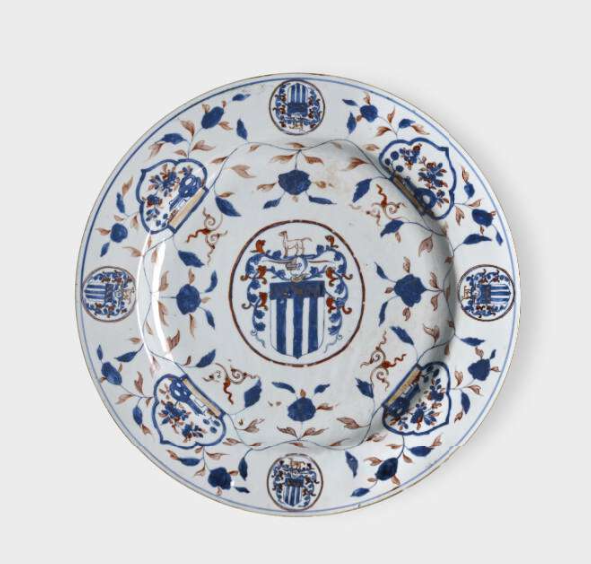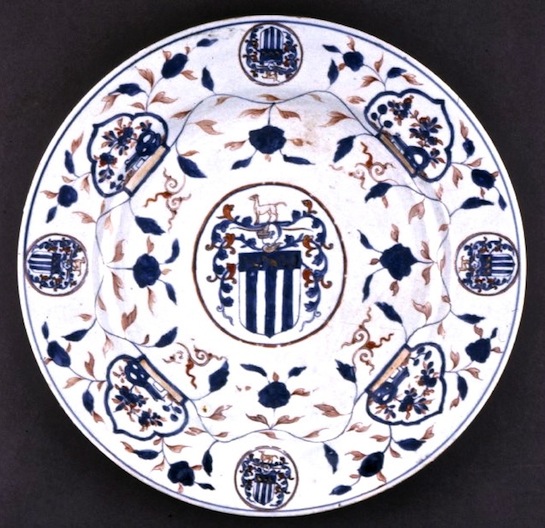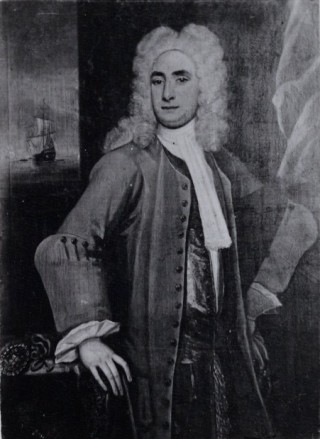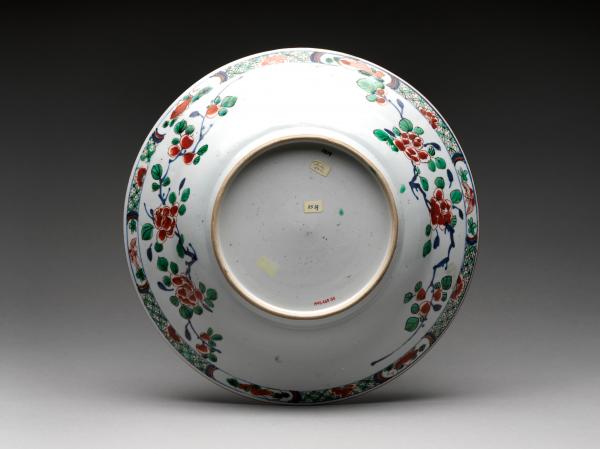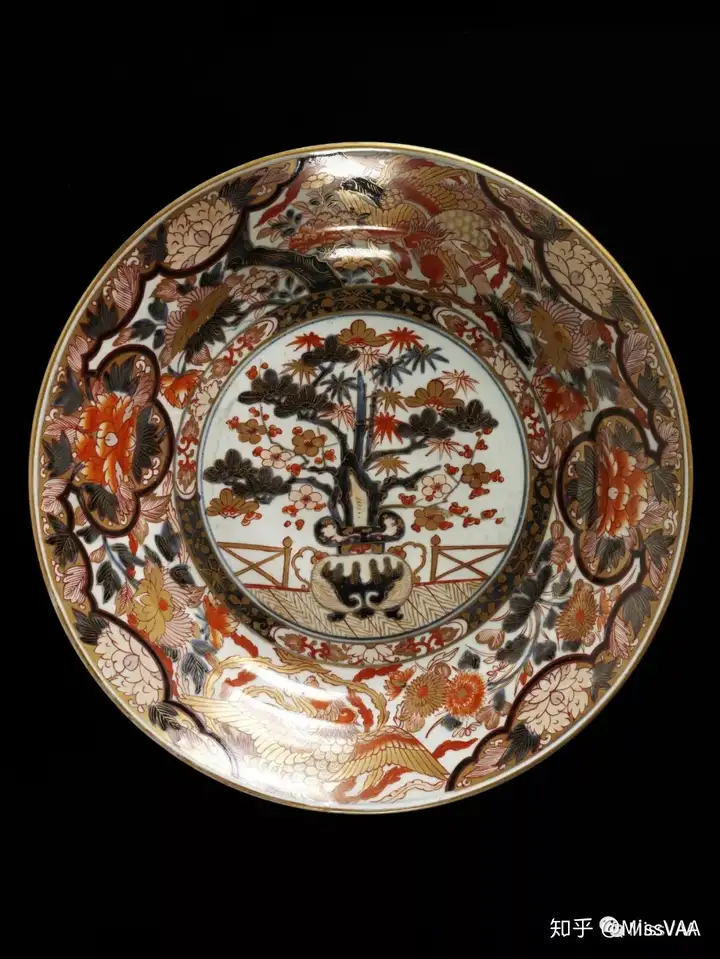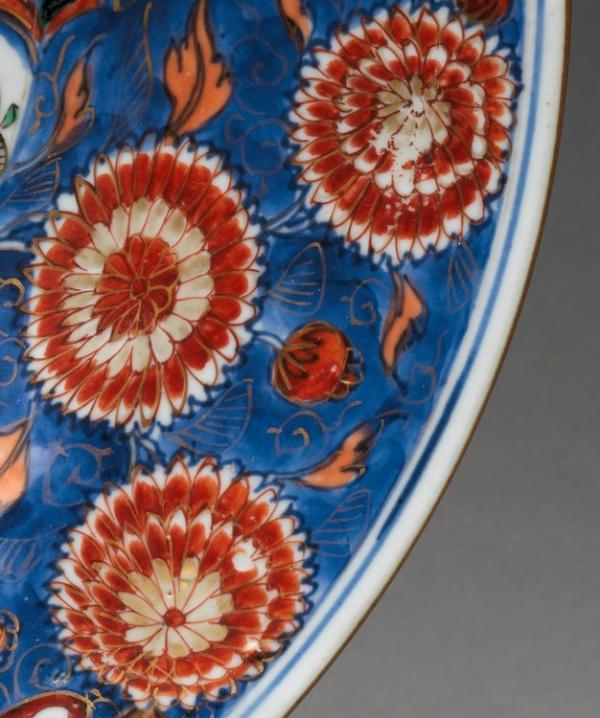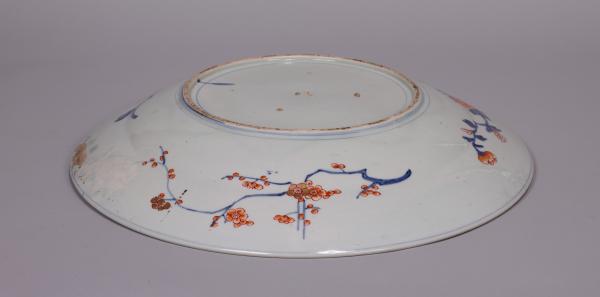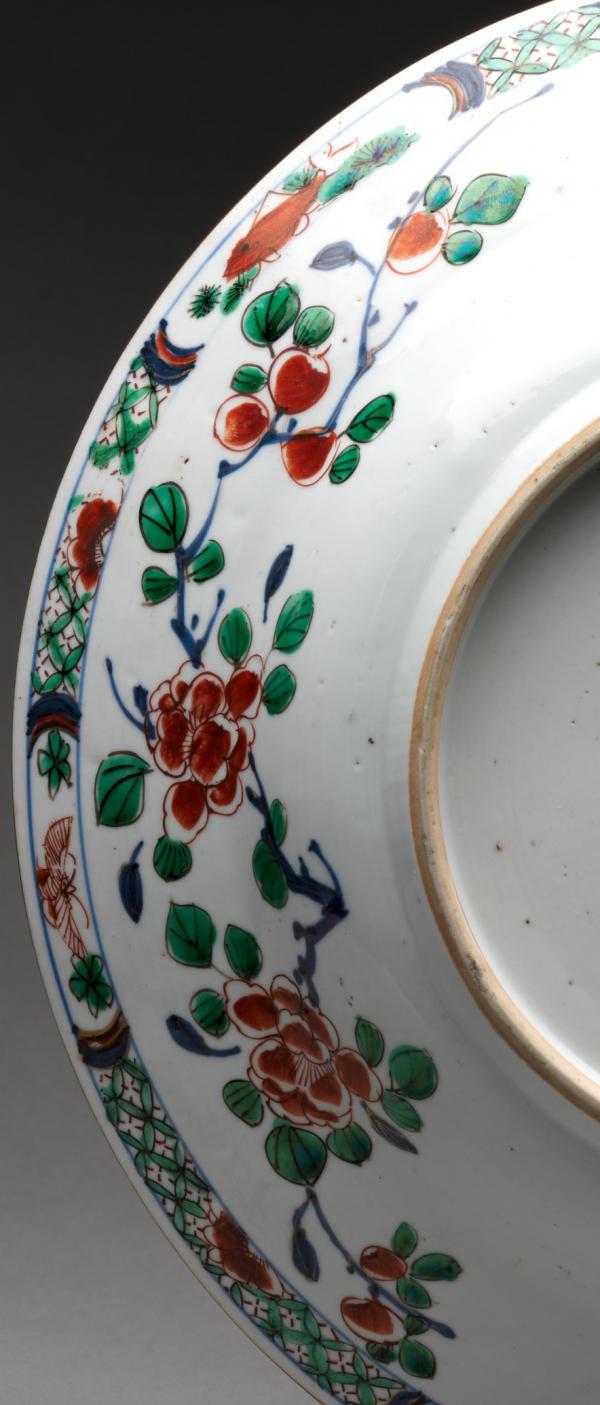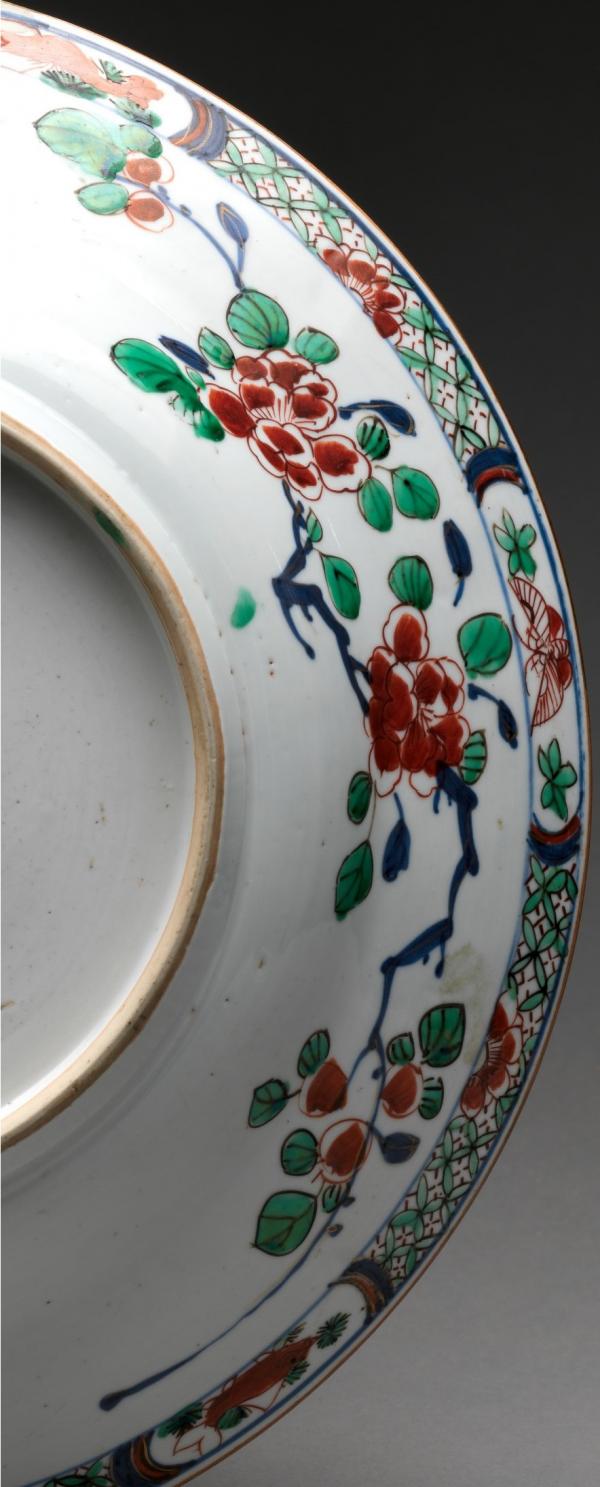康熙仿伊万里瓷器
2024-4-9
大英博物馆里珍藏的一个康熙朝景德镇仿日本伊万里釉下青花釉上矾红和描金外销瓷盘:
Chinese imari plate with an English coat of arms. The large plate is decorated in Chinese imari style, in underglaze blue, red enamel and gilding, with a central medallion containing a coat of arms with elaborate fronds surmounted by a helmet and with an animal crest; this medallion is repeated four times on the rim, alternating with ruyi - shaped panels enclosing small landscape scenes, which are joined by an overall flower scroll. The base shows a lingzhi mark in a double circle. The arms are Martin. This is one of the Martin families of Worcestershire and London.
| |
 | 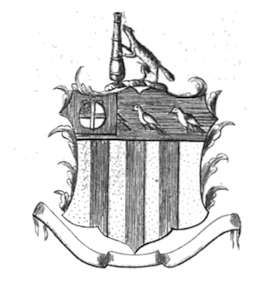 |
这是一个纹章瓷,传承有序,当初是为东印度公司的船长马修马丁(1676-1749)家族特别定制的。
Black and white print of Matthew Martin’s portrait 1712
| |
美国大都会博物馆里,也展览了一个景德镇专门为欧洲市场生产的清雍正时期(1725-1730)仿日本伊万里风格的瓷盘:
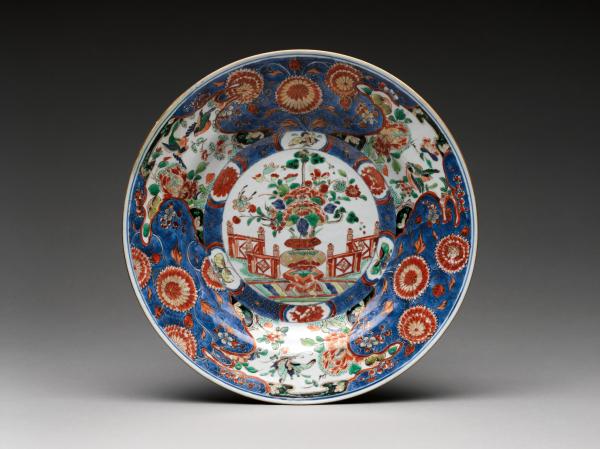 |
|
The extensive use of gilding and the dark blue and red enamels illustrate the Chinese adoption of the Japanese Imari style. This style became popular in Europe in the mid-seventeenth century, when warfare in China disrupted the kilns at Jingdezhen. Once work there resumed, Chinese potters incorporated the Imari style in their repertory in order to appeal to the lucrative European market.
连代表日本皇室和大和魂的菊花纹,都照抄了下来:
江户时代日本伊万里瓷盘 | |
|
|
日本东京国立博物馆里,也有一个江户时期的伊万里大盘,叫五彩樱花鹫纹大盘,除了相似的菊花纹之外,值得注意的是背后的樱花:
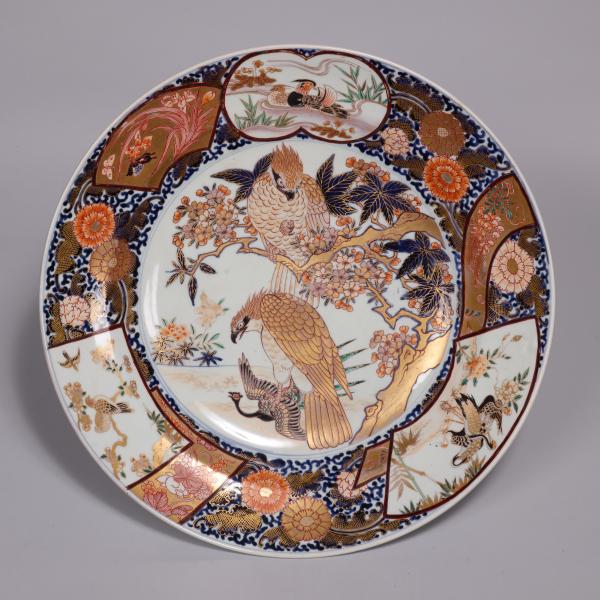 | |
东京国立博物馆藏江户时代日本伊万里瓷盘 | |
|
|
纽约大都会博物馆藏雍正伊万里外销瓷盘 | |
在英国维多利亚博物馆,也有一个康熙五彩盘,同样的花卉,日本叫樱花,中国叫樱桃花,英国人叫 prunus branches,都大差不差。
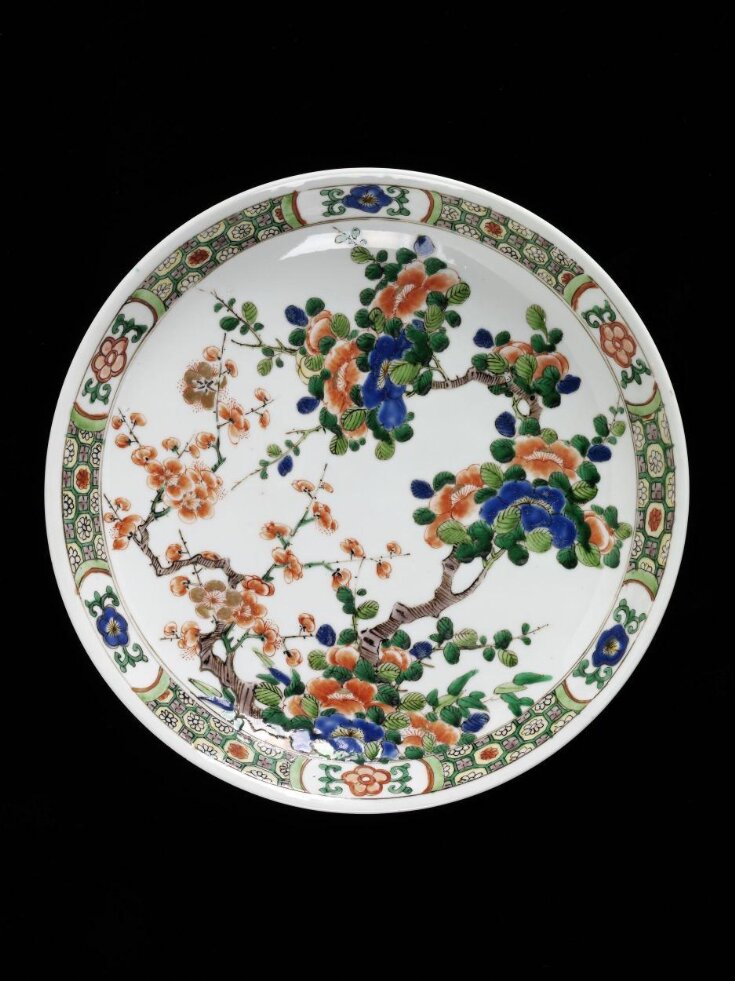 |
This saucer is painted with enamels of the famille verte colour palette with a traditional decorative pattern of prunus branches and rocks, a popular design on export ware of this kind. On the base a mark shaped as a ding bronze vessel in a double circle is painted in underglaze blue.
历史上日本人学中国,中国人也学日本,彼此学习的能力都很强,这本属正常的文化交流,尤其是近代。可不知为什么,眼下的中国人,大都夜郎自大文化自信一叶障目,不愿意承认后面这点。

